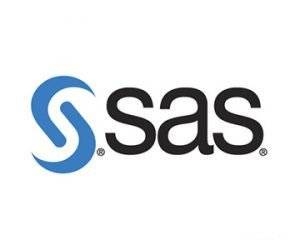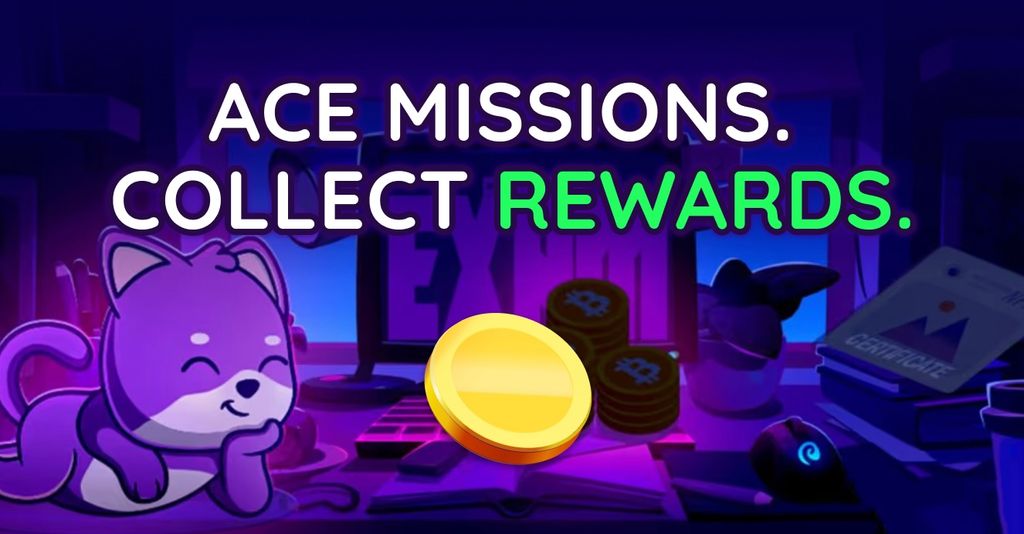Ace quick missions & earn crypto rewards while gaining real-world Web3 skills. Participate Now! 🔥
 If huge and well-known companies want to grow even further than they are now, they have to constantly improve their expertise and fields of specialization. A key aspect of this is being able to adequately analyze their numbers, and make certain conclusions for further plans of action. To do so, however, companies need good and reliable analytical programs - SAS is one of them. SAS programmers manage analytical sheets through SAS and make them suitable for visual representation and analysis. This SAS interview questions tutorial is aimed at such programmers - especially those who are looking for a great job opportunity.
If huge and well-known companies want to grow even further than they are now, they have to constantly improve their expertise and fields of specialization. A key aspect of this is being able to adequately analyze their numbers, and make certain conclusions for further plans of action. To do so, however, companies need good and reliable analytical programs - SAS is one of them. SAS programmers manage analytical sheets through SAS and make them suitable for visual representation and analysis. This SAS interview questions tutorial is aimed at such programmers - especially those who are looking for a great job opportunity.
We’ll talk about the various SAS programmer interview questions that you might get during your job interview, and the best answers to provide your potential employers. The questions in this tutorial have been handpicked to represent ones that interviewers ask, so you can safely study and learn them before your interview.
Table of Contents
- 1. Basic Questions About SAS
- 1.1. Question 1: What is SAS?
- 1.2. Question 2: Name a few functions that SAS is capable of performing.
- 1.3. Question 3: How many types of data are there in SAS?
- 1.4. Question 4: What are the main components used in SAS programming?
- 1.5. Question 5: How can you sort variables in SAS?
- 1.6. Question 6: What is a ‘Data Step’?
- 1.7. Question 7: Define PDV.
- 1.8. Question 8: What’s the difference between a ‘function’ and a ‘procedure’?
- 1.9. Question 9: How to change sorting from ‘ascending’ to ‘descending’?
- 1.10. Question 10: What is the main difference between ‘format’ and ‘informat’?
- 1.11. Question 11: Can you tell a basic syntax style in SAS?
- 1.12. Question 12: Do SAS ‘informats’ have any other functions?
- 1.13. Question 13: Name some of the key concepts of SAS?
- 1.14. Question 14: What are the most common programming errors committed in SAS?
- 1.15. Question 15: Do you know how to create a permanent data set?
- 2. SAS Interview Questions - Advanced
- 2.1. Question 1: Can a numeric variable belong to the ‘character’ data type?
- 2.2. Question 2: What’s the difference between ‘PROC CONTENTS’ and ‘PROC PRINT’?
- 2.3. Question 3: Is using ‘group’ the only way to define variables in a ‘PROC report’?
- 2.4. Question 4: Differentiate ‘CEIL’ and ‘FLOOR’.
- 2.5. Question 5: Name a couple of aspects that define the SAS syntax.
- 2.6. Question 6: Give a few examples of places where ‘table lookups’ may be stored.
- 2.7. Question 7: What’s the difference between ‘NODUP’ and ‘NODUPKEY’?
- 2.8. Question 8: What are some of the ways to create a Macro variable in SAS?
- 2.9. Question 9: Is ‘PROC MEANS’ capable of analyzing only character-based variable?
- 2.10. Question 10: Is it possible for ‘PROC REPORTS’ and ‘PROC PRINTS’ to have the same defaults? If so, give an example.
- 3. Conclusions
Basic Questions About SAS
The basic questions are usually short and simple. All that you require to answer them is some basic knowledge with SAS and a little bit of experience with the program. Naturally, these aren’t going to be the only questions that you’re bound to get asked, but it’s a great start. This is especially true if you’ve never had a SAS interview questions-based job interview before.
Latest Deal Active Right Now:Take advantage of this special Udacity coupon code & access selected Udacity courses for free! Learn new skills & develop your career at zero cost.
So, without further ado, let’s jump right in.
Question 1: What is SAS?
A pretty common first question, it would probably be tough for your employers to talk about SAS with you without actually figuring out if you know what it is in the first place. All that you need to do is provide a concise, clear definition. One piece of advice that you could utilize is to try and answer these types of questions in your own, personal words.
To give you a general answer, SAS abbreviates to “Statistical Analysis System”. It is most commonly used for advanced analytics, business analysis, and various data management tasks.
Furthermore, to answer one of the most popular and first asked SAS interview questions, you'll need to know what a SAS programmer does. A SAS programmer is someone who takes the companies data sheets (and other sources of information, if there are any) and analyzes them by utilizing the SAS programming language. They then provide visual representations of the analysis back to the management, who then analyze the data and take it from there.
Question 2: Name a few functions that SAS is capable of performing.
Data management and storage; app development; improvement of quality. There are honestly quite a few functions that SAS performs - however, these are some of the main ones.
Question 3: How many types of data are there in SAS?
You could say that this is one of the easier SAS interview questions - there are only two data types in SAS. The two types are called Character data and Numeric data.
Question 4: What are the main components used in SAS programming?
In total, there are three main components that programmers use in SAS programming work - dataset, statements, and variables.
Question 5: How can you sort variables in SAS?
It’s pretty simple when you think about it.
The PROC SORT is the command that you’re looking for. It can sort variables, both singular and in groups.
Question 6: What is a ‘Data Step’?
The “Data Step” is responsible for the creation of datasets. These sets are comprised of data and what is known as data dictionaries - lists that hold various information about the data within them.
Question 7: Define PDV.
PDV stands for “Program Data Vector”. It is the memory’s logical area.
Question 8: What’s the difference between a ‘function’ and a ‘procedure’?
This might be one of the more tricky SAS interview questions to pinpoint - it’s quite easy to get mixed up between the two.
A function in SAS requires specific argument values to successfully perform an observation. This is not the case with procedures, however. They only require one single variable to be able to perform the before mentioned observation.
It is more than likely that you’ll get quite a few comparison questions during your job interview. Some of these questions can be tricky - not necessarily because they’re difficult in of themselves, but because the two objects that you’re comparing might be very similar. In such a situation, it can be tricky to draw a clear distinction - that’s why extensive studying beforehand is so important!
Question 9: How to change sorting from ‘ascending’ to ‘descending’?
As can you might've noticed there are a lot of comparisons in SAS interview questions. Quite frankly, all you need to do to achieve this is to input the DESCENDING command into your code (or, rather, swap it with the ASCENDING command).
Question 10: What is the main difference between ‘format’ and ‘informat’?
Format and Informat have a couple of differences, but when it comes to the fundamental level, there is one key aspect to note: Format is used to write files, while Informat is used to read them.
Question 11: Can you tell a basic syntax style in SAS?
The essential elements are:
- A semi-colon at the end of every line
- A data statement to define your data set
- Input statement
- At least one space between each word or statement
- A run statement
Question 12: Do SAS ‘informats’ have any other functions?
Apart from telling SAS on how to read data into variables, ‘informats’ input data from external files known as Flat Files ASCII.
Question 13: Name some of the key concepts of SAS?
Some of the SAS interview questions require memorizing certain concepts like:
- SORT procedure
- Missing values
- KEEP=, DROP= dataset options
- Data set logic
- Reset to missing, retain statement
- Log
- FORMAT procedure for creating value formats
- Data types
- IN= dataset option
Question 14: What are the most common programming errors committed in SAS?
Most commonly committed programming errors in SAS are:
Not using debugging techniques
Not checking the log after submitting program
Not using Fsview option vigorously
Missing semicolon
Question 15: Do you know how to create a permanent data set?
Two crucial steps:
- Assign a library and engine.
- Create the data. Assign a library and a data set name to make the data set permanent.
SAS Interview Questions - Advanced
 Since SAS is a multifunctional platform, there are a lot (and I do mean A LOT) of different questions you might get asked. However, a lot of employers require SAS programmers for similar tasks, so you’re bound to receive mostly SAS programmer interview questions. If you’ve already had some job interviews concerning SAS, you might have noticed that a lot of the questions repeat themselves - meaning that different companies ask similar questions during the interview. That’s why you don’t need to learn every variation of each question out there (to be frank, that would probably be impossible).
Since SAS is a multifunctional platform, there are a lot (and I do mean A LOT) of different questions you might get asked. However, a lot of employers require SAS programmers for similar tasks, so you’re bound to receive mostly SAS programmer interview questions. If you’ve already had some job interviews concerning SAS, you might have noticed that a lot of the questions repeat themselves - meaning that different companies ask similar questions during the interview. That’s why you don’t need to learn every variation of each question out there (to be frank, that would probably be impossible).
Now that you have a rough idea of what to expect out of the basic SAS interview questions and answers, let's move on and transition to the more advanced stuff. These SAS programmer interview questions are given to potential employees if and when the interviewers see that they have a good fundamental understanding of SAS.
Don’t worry, though - you most likely won’t need to program an entire chart out of given data. However, you will most likely get asked questions that would allow you to show your in-depth knowledge and understanding about all of the intricacies of SAS. A good thing to keep in mind is that a lot of companies don’t require you to be an expert of SAS to start working for them - they might offer further training courses for that. They do have to trust and believe in your capabilities, however - that what these advanced SAS interview questions are for.
Question 1: Can a numeric variable belong to the ‘character’ data type?
Yes, yes it can. This depends on the context and the situation that a number is used in.
The main requirement for a numeric valuable to belong to the character data type is that the number mustn’t represent several items, but rather a position on some sort of a scale.
To give you an example, in a situation where the variable “Dog” has 0 and 1 values attached to it, these do not represent the number of dogs. Rather, 0 means that “it is a dog”, while 1 means “it is not a dog”.
Question 2: What’s the difference between ‘PROC CONTENTS’ and ‘PROC PRINT’?
PROC, in general, is used to read and analyze data with the tools that SAS possesses. Now, with that said, PROC CONTENTS is used to display all of that processed information, while PROC PRINT makes sure that the before-mentioned information is correct.
Question 3: Is using ‘group’ the only way to define variables in a ‘PROC report’?
SAS interview questions like these might try to throw you off balance, but try to analyze them from different perspectives. A lot of the times, your interviewers will try to twist and turn the questions, ask them from different angles (using different wording). This is done to check your critical thinking skills, and if you only “copy-pasted” the information from the web to your brain, or if you know what you’re talking about.
Using the ‘group’ definition isn’t the only way to define the variables. There are quite a few definitions that you can use (i.e. analysis).
Question 4: Differentiate ‘CEIL’ and ‘FLOOR’.
The CEIL function, when issued, retrieves the smallest integer, while FLOOR does the opposite and retrieves the biggest one.
Question 5: Name a couple of aspects that define the SAS syntax.
This is one of the SAS interview questions where you do have some freedom to choose from a few options. To give you an example, you could mention that variable names in SAS are set and described by using the INPUT statement. Additionally, all of the statements in SAS are ended with a “;“.
Question 6: Give a few examples of places where ‘table lookups’ may be stored.
There are several places where you could store your table lookups. One of the more popular of these places would be the code. Additionally, datasets and arrays also store table lookups.
Question 7: What’s the difference between ‘NODUP’ and ‘NODUPKEY’?
NODUP is responsible for eliminating identical observations, while NODUPKEY deletes BY variables.
Question 8: What are some of the ways to create a Macro variable in SAS?
One of the advanced SAS interview questions might be about Macro variables. A few notable methods of creating Macros in SAS include, but are not limited to Macro parameters, “%LET” and “%DO” statements, etc.
Question 9: Is ‘PROC MEANS’ capable of analyzing only character-based variable?
No, it isn’t capable of doing that. The PROC MEANS function needs at least one numeric variable to perform an analysis.

- Easy to use with a learn-by-doing approach
- Offers quality content
- Gamified in-browser coding experience
- Free certificates of completion
- Focused on data science skills
- Flexible learning timetable

- High-quality courses
- Nanodegree programs
- Student Career services
- Nanodegree programs
- Suitable for enterprises
- Paid certificates of completion

- A wide range of learning programs
- University-level courses
- Easy to navigate
- University-level courses
- Suitable for enterprises
- Verified certificates of completion
Question 10: Is it possible for ‘PROC REPORTS’ and ‘PROC PRINTS’ to have the same defaults? If so, give an example.
Yes, it is possible. An example of such a situation would be when there are rows that are ordered in the say way in which they are segmented in the dataset.
These were ten of the more popular versions of advanced SAS interview questions and answers. As you might have noticed, a lot of them are comparison-based. As I’ve stated earlier, these comparisons are usually difficult in that they try to throw you off balance - if you don’t cave in, however, you shouldn’t have any problems dealing with them.
When it comes to the rest of the questions, just try to look at them as great topics that can point you in the right direction. So, for example, if you see a question concerning the PROC function, don't just read the answer and move on. Do take time to research the function properly, give it enough attention - this way, you'll be able to have a full-circle type of learning experience.

Did you know?
Have you ever wondered which online learning platforms are the best for your career?
Conclusions
We have reached the end of our “SAS programmer interview questions” tutorial. We started with some of the more basic SAS interview questions, and after that, reviewed a few of the more notable examples of advanced questions that you might receive during your job interview.

When coming into your interview, try to relax and not think about the possible questions that you might get asked. If you’ve done enough revisions before the job interview, all of the answers will simply pop into your head when you are asked the question directly. If you’re stressed out, you might even hinder this process and forget even the simplest of answers.
Try to expand with most of your answers - don’t just give generic one-word statements. If you expand, you will have the opportunity to show your knowledge on the topic to your potential employers - this might serve as a great advantage later on in the interview.
Finally, try to relax and show your potential employers all that you have! Even if you don’t succeed in your first job interview, the experience you’ll receive will be an extremely valuable aspect when going into the next interview. Eventually, you’ll be able to land that awesome job position as a SAS programmer, and enjoy all of the benefits that come with it!







